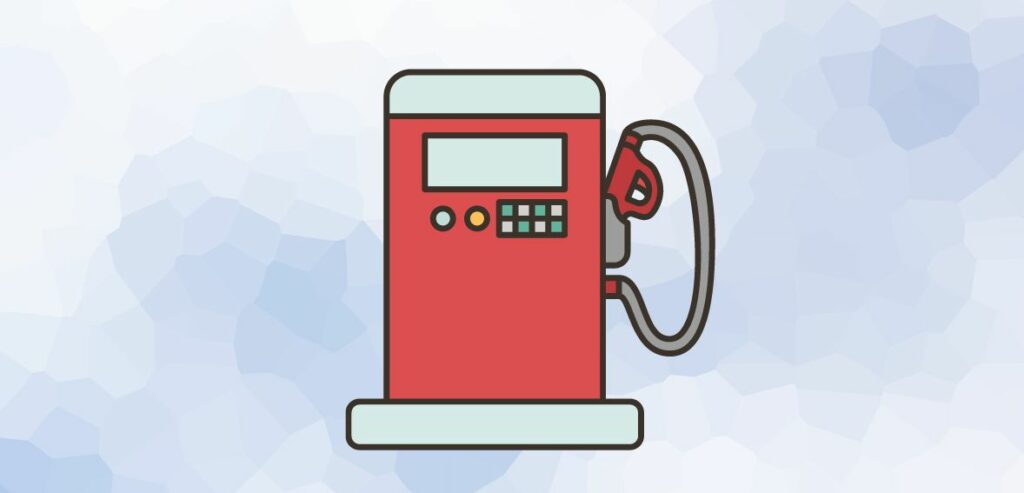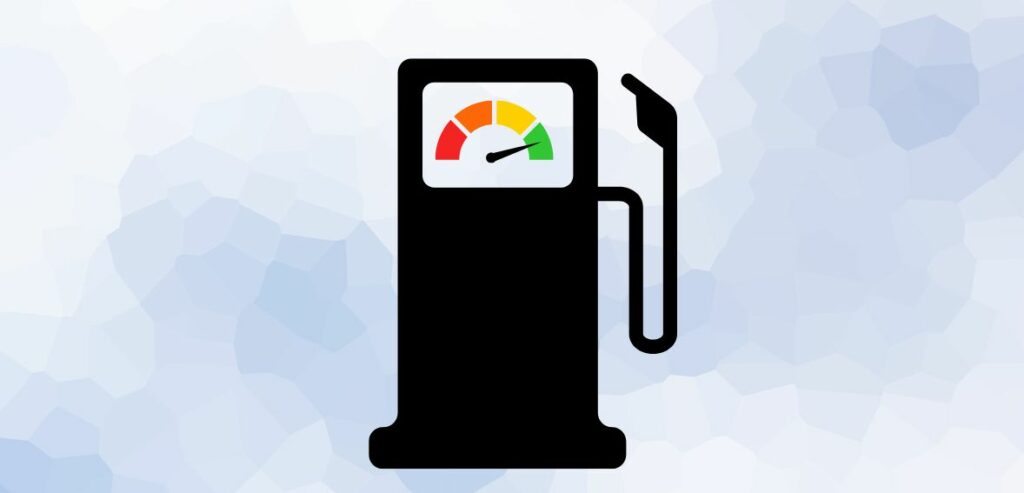Fuel variance is one of the significant challenges within the fuel retail industry. It refers to the discrepancy between the amount of fuel bought and sold. This article delves into the causes of fuel variance, its impact on operations, and practical strategies for addressing and minimizing these discrepancies to ensure accurate inventory management and profitability.
What is Fuel Variance?

Fuel variance is a term used in the fuel industry to describe the difference between the amount of fuel that should be in a tank (based on the recorded amount delivered and sold) and the actual amount of fuel in the tank upon physical inspection.
This difference, which can be either positive or negative, is an important indicator that helps track the amount of fuel being used, lost, or possibly gained. Fuel variance is a crucial concept that ensures the amount of fuel delivered and sold is accurately accounted for, which is essential for efficient fuel management.
The Significance of Fuel Variances
Understanding the source and extent of fuel loss is vital for fuel retailers and convenience stores, as it helps them minimize shrinkage and maximize revenue from fuel sales.
While some degree of fuel loss is considered normal, neglecting to monitor and reduce fuel variances can negatively impact profitability. Depending on the underlying reasons, it could even lead to notices of violations (NOVs) and fines.
Fuel variances stemming from inaccurate tank charts or malfunctioning dispensers can result in either a free fuel “giveaway” or a very bad experience for your customer at the pump.
Fuel loss can hurt profits. For example, let us assume the fuel cost is $3 per liter and a profit margin of 17%. Imagine you sell 1,000 liters of fuel in a day. With fuel priced at $3 per liter, your total sales would amount to $3,000 for the day. Considering a profit margin of 17%, your profit from these sales would be $510 ($3,000 * 0.17).
Suppose there’s a 5% fuel loss due to leaks, evaporation, or other factors. This means that instead of selling 1,000 liters, you’re selling only 950 liters (1,000 liters – 5% loss). Consequently, your sales drop to $2,850 (950 liters * $3 per liter).
With the same 17% profit margin, your profit dwindles to $484.50 ($2,850 * 0.17). This results in a reduction of $25.50 in profit, solely attributable to a 5% fuel loss. Keep in mind that a 4% evaporation loss is typical at pumps. This loss can amount to around 500 liters during the initial decanting, followed by approximately 150 liters per 12,000 liters in petrol and 80 liters per 12,000 liters in subsequent decanting.
What are the Different Sources of Fuel Variances?

- Delivery Discrepancy:
Are you certain that all the fuel loaded onto the delivery truck has been properly transferred into your storage tank? How do you ensure the accuracy of the bill of lading during this process? A retailer should implement proper tracking and monitoring systems to ensure that all the fuel loaded onto the delivery truck ends up in your storage tank. These systems can include GPS tracking, fuel level monitoring, and real-time reporting of fuel deliveries.
It is essential to verify the accuracy of the bill of lading, which is a document that details the quantity and type of fuel being delivered. This can be done through independent third-party inspections, as well as through internal audits and inspections of delivery records.
- Short Drop:
When your tank receives less fuel than what you ordered from the supplier, it’s a short drop. This often occurs due to terminal meter drift or the tank failing to pump all the loaded fuel.
- Particles in the System:
Ethanol added to gasoline releases particles into the fuel. These are contaminants and can compromise the accuracy of your meters. This can result in customers receiving more or less fuel than they’ve paid. With the rise in contaminants in fuel, frequent recalibration and maintenance have become necessary.
- Loss of Temperature:
Fuel expands or contracts based on temperature fluctuations, which can happen during both delivery and storage. In colder weather, fuel may contract in the delivery truck before unloading, causing a variance between the actual delivery and the bill of lading. In warmer outdoor temperatures, the fuel expands, but in the tank, it contracts back. Leading to apparent fuel loss despite no delivery discrepancy. This situation results in fuel loss without wrongdoing, further complexing the issue.
- Theft:
From tampering with dispensers to significant amounts of fuel missing from delivery trucks, theft substantially threatens your profitability. Thieves employ various tactics, including siphoning fuel directly from underground storage tanks, bypassing dispenser meters, and making off from the forecourt without paying.
Detection of theft presents a difficult challenge for forecourt owners. With numerous anti-theft products, distinguishing between essential and optional security measures becomes crucial.
- Storage Tank Leaks:
Storage tank leaks are the most obvious cause of fuel loss and require immediate attention. They pose environmental and regulatory risks and impact profits. Fortunately, several solutions, including automatic tank gauges and alarm management services, are available to detect and prevent storage tank leaks.
- Accounting and Measurement Errors
Measurement and accounting errors pose significant challenges in accurately tracking fuel transfers. During each custody transfer, there exists the potential for errors in reporting the quantity of fuel delivered or received.
Reconciling the deliveries and sales at a fuel site proves to be a complex task, particularly when various sources such as delivery confirmations, bills of lading, automatic tank gauges, and POS equipment yield conflicting records. Moreover, factors such as tank charting discrepancies and equipment malfunctions further exacerbate the issue by masking any genuine fuel losses.
The Need for Automation

Automating your forecourt has many benefits, including streamlining operations and enhancing control over fuel inventory and day-to-day site activities.
A forecourt controller system effectively merges the management of your wet stock, which is your fuel supply, with the overall control of your site operations. The goal is to achieve thorough forecourt reconciliation, which includes everything from monitoring fuel levels through automatic tank gauging to overseeing transactions at the fuel point of sale.
The components such as the Forecourt Controller and Fuel POS System play crucial roles in this ecosystem. They allow for the seamless management of site elements, including users, customers, products, and attendants, and ensure the smooth operation of dispensers, payment terminals, and fuel tanks.
Ensure that Inventory, transactions, payments, and shifts are accurately recorded. Make this data easily accessible from various devices, including smartphones, PCs, and tablets. This comprehensive approach not only simplifies the management of your forecourt but also guarantees that every aspect of the operation is under control, leading to a more efficient and effectively managed site.
Conclusion
Addressing fuel variances is essential for effective forecourt management and maximizing profitability. By understanding the sources and impact of fuel losses, site managers can implement proactive measures to mitigate these challenges. Monitoring fuel variances helps maintain accurate inventory levels, ensures compliance with regulatory requirements, and enhances customer satisfaction.
To tackle fuel variances effectively, site managers should focus on various aspects such as delivery discrepancies, short drops, system particles, temperature variations, theft, and storage tank leaks. Implementing technologies like GPS tracking, real-time monitoring, and alarm management systems can enhance the accuracy of fuel inventory management and the detection of anomalies.
By addressing fuel variances comprehensively and proactively, site managers can minimize shrinkage, maximize revenue, and maintain a competitive edge in fuel retailing.
Frequently Asked Questions
What is fuel variance?
Fuel variance refers to the variation between the recorded amount of fuel in a tank, based on deliveries and sales data, and the actual quantity of fuel in the tank at a specific moment.
How can fuel losses be controlled?
To control fuel losses, it's crucial to:
Identify potential issues such as delivery shortages, leaks, or manual errors in fuel tanks.
Utilize updated technology to receive real-time alerts about inaccuracies post-delivery.What steps are recommended to establish a baseline understanding of fuel variance?
Ensure proper maintenance and operation of equipment at your fuel site, upgrading as necessary.
Obtain accurate tank charts for your site.
Implement daily reconciliation and variance tracking methods.

